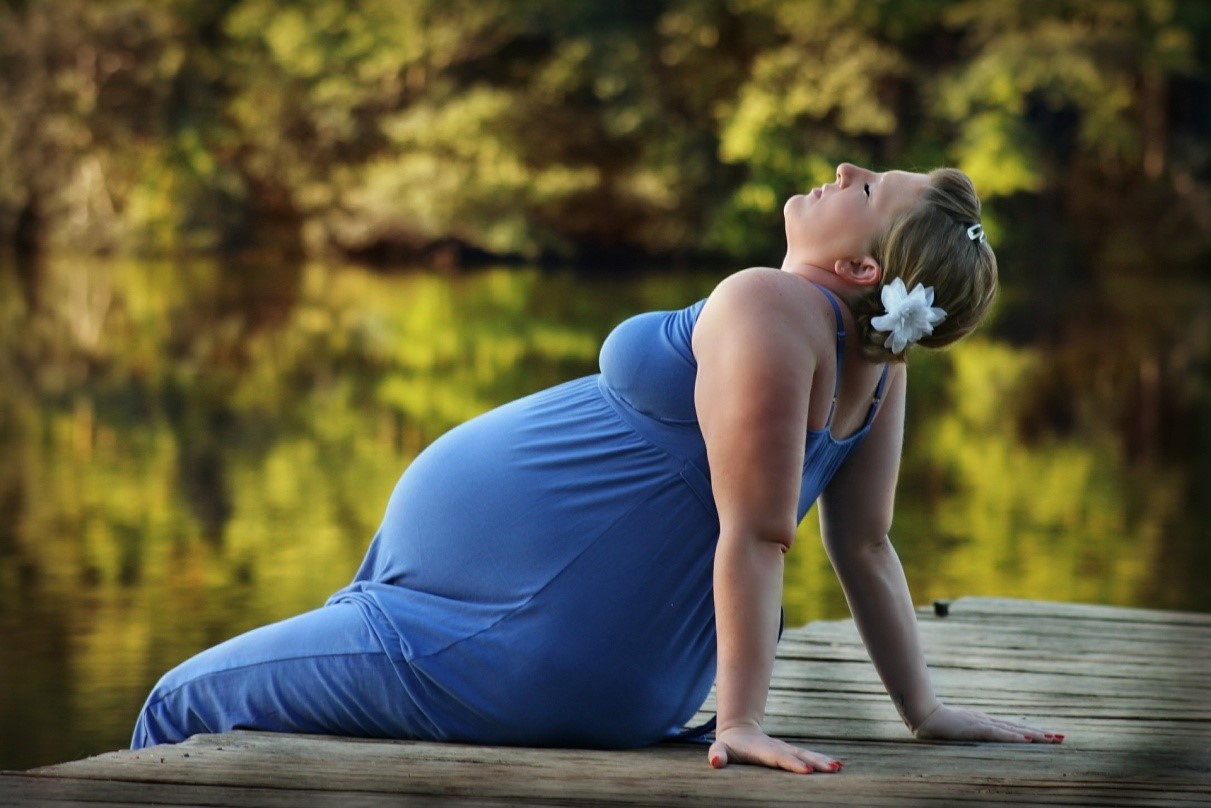Pregnancy, Hormones and Mood Swings
Why are women hormonal when they are pregnant? And are there different types of food that can help alleviate the symptoms?
 By “hormonal”, we are referring to the severe mood swings that many women experience during pregnancy. Mood swings are also a common symptom of PMS, and in both cases, hormone imbalance is a likely cause. Unfortunately, hormone imbalance is quite common and is often a result of the unhealthy habits that our modern lifestyles promote. While there are many health factors that can cause moodiness, female hormone imbalance will be the focus of this discussion.
By “hormonal”, we are referring to the severe mood swings that many women experience during pregnancy. Mood swings are also a common symptom of PMS, and in both cases, hormone imbalance is a likely cause. Unfortunately, hormone imbalance is quite common and is often a result of the unhealthy habits that our modern lifestyles promote. While there are many health factors that can cause moodiness, female hormone imbalance will be the focus of this discussion.
Female Hormone Imbalance
Estrogen and progesterone are the primary hormones involved in menstruation and pregnancy. In general, estrogen promotes tissue growth and progesterone regulates it. As such, when an imbalance between these hormones develops, serious problems can result.
Low progesterone is the most common form of female hormone imbalance and typically results in a condition called “estrogen dominance.” Even if estrogen levels are normal, they’ll still be high in relation to the low level of progesterone. This can cause mood swings, breast soreness, migraines, irregular menstruation, water retention, weight gain and much more. If left untreated, some of the major problems it can lead to include fibroids, infertility, endometriosis, cancer, heart disease and stroke.
Although the production of both estrogen and progesterone are dramatically increased during pregnancy, the severity of estrogen dominance can increase if the body is not able to meet the increased demand of progesterone. In extreme situations, this can even result in miscarriage.
What Causes the Imbalance?
The two primary factors that contribute to progesterone deficiency have to do with how it’s made and its involvement with stress.
Progesterone is synthesized from another hormone named pregnenolone which is created from cholesterol. Because we’ve been programmed to fear dietary cholesterol, many people follow a low fat and low cholesterol diet. This deprives them of the materials needed to synthesize important hormones such as progesterone. Furthermore, because cholesterol is important to the function of the brain and nervous system, the body will always sacrifice hormone production in favor of these more important areas.
Another dietary factor that contributes to estrogen dominance is the consumption of xenoestrogens and phytoestrogens. Respectively, these are chemical and plant based substances that mimic estrogen in the human body. Xenoestrogens are commonly found in plastics, pesticides, and other agricultural chemicals while soy products are notorious for containing phytoestrogens. This is just one of many reasons why it’s important to eat organic food, avoid storing your food or water in plastic, and minimize your consumption of soy products.
The Contribution of Stress
Finally, stress is a major contributor to progesterone deficiency. Cortisol, the body’s primary stress and anti inflammatory hormone, is derived from progesterone. As such, chronic exposure to stress will greatly reduce the availability of progesterone for other purposes. Furthermore, common sources of chronic inflammation such as infection and food sensitivities will do the same.
Many of us live with excessive stress, eliminate saturated fat and cholesterol from our diets, eat conventionally farmed foods that are laced with chemicals, and unknowingly eat foods that we’re sensitive to. In fact, this typically occurs on a daily basis. Each of these factors can cause estrogen dominance and modern society promotes all of them!
Adrenal fatigue is another example of how modern living promotes hormone imbalance and poor health. And it plays a role in estrogen dominance as well.
 Regaining Balance
Regaining Balance
The question asked assumes that eating specific foods can resolve all of this. While diet is part of the solution, it’s far from being the complete solution. Searching for a particular food or supplement to resolve a specific problem is nothing more than a natural form of chasing symptoms. As always, the solution to all health problems begins with living a lifestyle that incorporates the 7 foundational factors of optimal health.
Because cholesterol is a precursor to many essential hormones, it’s important to get past the fear that dietary cholesterol and saturated fat cause heart disease. For further information about the fallacies of this belief, read The Cholesterol Myths by Uffe Ravnskov MD, PhD.
A few good sources of saturated fat and cholesterol include beef, pork, butter, ghee, and eggs. Be sure to get these foods from quality sources, and consider following the Metabolic Typing Diet to understand what quantities of these foods would be best for you.
In chronic cases of hormone imbalance where progesterone is used excessively to produce the cortisol needed to handle frequent stress and inflammation, the body’s preferred pathways of hormone synthesis can become altered indefinitely. In such cases, lifestyle improvements are still necessary, but often not enough.
Supplementation of bio-identical hormones is often needed to re-establish the proper pathways. However, for this to happen, any existing food sensitivities or chronic infections must be addressed as well. For this type of treatment to be effective, and also safe, proper testing is absolutely essential.
Hormone Balance is Just One Part of Functional Nutrition.
Integrate Functional Nutrition Into Your Services. Functional Diagnostic Nutrition (FDN) offers a certification for professionals with a passion for helping others and who is willing to walk-the-talk. Helping others to regain health, regardless of their starting point, requires only the proper training and leadership. Click here to learn more about the FDN Certification course.
Originally printed on the Functional Diagnostic Nutrition blog. Reprinted with permission.
The mission of Functional Diagnostic Nutrition is to educate as many people as possible about how to get well and stay well naturally, so that they may, in turn, educate others. FDN founder Reed Davis is a Certified Nutritional Therapist and Founder of the Functional Diagnostic Nutrition® (FDN) Certification Course. Reed is known as one of the most successful and experienced clinicians in the world today, having provided functional assessments to over 10,000 clients for hormone levels, bone density testing, adrenal function, digestive problems, immune system and detoxification issues as well as testing for pathogens, food sensitivities and many related health problems.



 I can’t quite remember where I heard it, but somewhere I once heard someone say that their deepest desire in life is to not leave an ounce of potential behind when they’re gone.
I can’t quite remember where I heard it, but somewhere I once heard someone say that their deepest desire in life is to not leave an ounce of potential behind when they’re gone.
 What are they?
What are they?


 Progression of exercise should be gradual. A deconditioned person should start without using any weight and concentrate on proper technique. If 8-10 repetitions can not be executed, repetitions should be decreased or the weight lowered or resistance band used changed to less resistance. The exercise routines have to be adapted for the day-to-day changes that that can affect the ability to work out. Our program will start using a very light weight, with few repetitions, typically 10. In subsequent sessions, patients can add repetitions. After performing 2 sets of 10 repetitions with no problem then a small amount of weight may be added in 1 pound increments. We also alternate between a strength training exercises with a stretch for each muscle group and to alternate an upper body and lower body exercises. Pilates exercises are great way to incorporate deep breathing with strengthening the core. The deep breathing helps to pump lymphatic fluid and will also help reduce stress.
Progression of exercise should be gradual. A deconditioned person should start without using any weight and concentrate on proper technique. If 8-10 repetitions can not be executed, repetitions should be decreased or the weight lowered or resistance band used changed to less resistance. The exercise routines have to be adapted for the day-to-day changes that that can affect the ability to work out. Our program will start using a very light weight, with few repetitions, typically 10. In subsequent sessions, patients can add repetitions. After performing 2 sets of 10 repetitions with no problem then a small amount of weight may be added in 1 pound increments. We also alternate between a strength training exercises with a stretch for each muscle group and to alternate an upper body and lower body exercises. Pilates exercises are great way to incorporate deep breathing with strengthening the core. The deep breathing helps to pump lymphatic fluid and will also help reduce stress.
 According to the American Medical Association (AMA) and the American Cancer Society (ACS), a healthy diet is superior to taking a multivitamin. If you already eat a healthy diet, you are less likely to benefit from extra multivitamin pills, says Dr. Kormos.
According to the American Medical Association (AMA) and the American Cancer Society (ACS), a healthy diet is superior to taking a multivitamin. If you already eat a healthy diet, you are less likely to benefit from extra multivitamin pills, says Dr. Kormos.
 Comfort zones, habits, and fear – the “Big 3” of life’s impediments to lasting and positive change in our lives need to be embraced for what they are: “False Evidence Appearing Real” – FEAR. I see this today as I have seen it repeatedly over the past 2 decades with my clients. We seem to end up being FORCED to change our ways rather than willingly and knowingly taking the steps necessary to move us forward to a more fulfilling life. Let’s take a look at a model for change that has begun to work for me.
Comfort zones, habits, and fear – the “Big 3” of life’s impediments to lasting and positive change in our lives need to be embraced for what they are: “False Evidence Appearing Real” – FEAR. I see this today as I have seen it repeatedly over the past 2 decades with my clients. We seem to end up being FORCED to change our ways rather than willingly and knowingly taking the steps necessary to move us forward to a more fulfilling life. Let’s take a look at a model for change that has begun to work for me.
 Choose products with fewer (less than 5) ingredients.
Choose products with fewer (less than 5) ingredients.


 But, on the flip side, it can be difficult to know what to follow and what activities could supercharge your health and fitness.
But, on the flip side, it can be difficult to know what to follow and what activities could supercharge your health and fitness. People include a lot of sugar-sweetened drinks in their diet. According to a study consumption of sugar-sweetened beverages is about 63% in children and 49% in adults. This forms the major source of added sugar that provides calories without nutrients.
People include a lot of sugar-sweetened drinks in their diet. According to a study consumption of sugar-sweetened beverages is about 63% in children and 49% in adults. This forms the major source of added sugar that provides calories without nutrients.